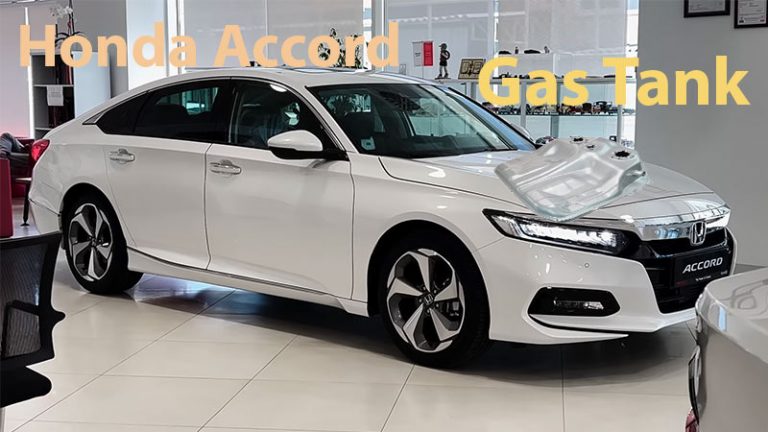In the realm of modern automobiles, the Honda Accord has garnered substantial attention, not only for its reliability and design but also for its specifications. Among these specifications, the gas tank size and overall fuel range stand out as crucial factors impacting user experience. Understanding these aspects can significantly inform potential buyers and current owners alike about the practicality of the vehicle. An exploration into the gas tank size and its implications presents an intriguing narrative beneath the surface.
The Honda Accord has undergone numerous transformations since its inception in 1976, evolving into a staple choice for many drivers. One pivotal feature that connects all generations is its gas tank size, which has varied from one model year to another. Generally speaking, the fuel tank capacity has hovered between 15.8 gallons to approximately 17.1 gallons across different models, with subtle alterations depending on specific variants. This variation is not arbitrary; rather, it is representative of engineering decisions aimed at optimizing performance, emissions, and consumer needs.
At a glance, a gas tank’s size may seem trivial, but it fundamentally alters the driving range of any vehicle. The driving range, defined as the maximum distance a car can travel on a single tank of fuel, is a critical component that influences daily usability for drivers. The Accord has consistently offered a commendable range due to its efficient fuel economy. For instance, newer models of the Accord often boast highway mileage exceeding 30 miles per gallon. When this is juxtaposed with the capacity of the gas tank, the range translates into an impressive travel distance, enabling longer journeys between fill-ups.
But the fascination with gas tank size and range extends beyond mere numbers. A deeper inquiry reveals a multitude of factors intertwined with this topic. For many, the ability to traverse vast distances without frequent stops is emblematic of freedom and convenience. Imagine embarking on a road trip, the open road beckoning, fueled by the assurance of a generous gas tank that diminishes the anxiety of refueling interruptions. Such sentiments are amplified by cultural narratives that valorize long drives as experiences laden with adventure and exploration.
Moreover, the intricacies of gas tank design offer insights into broader considerations, particularly regarding fuel efficiency and environmental impact. The automotive industry is currently experiencing a paradigm shift towards sustainability. Consequently, the Honda Accord’s engineers have had to balance traditional fuel reliance with the necessity for reduced emissions. With consumer awareness about climate change growing, there is an unmistakable demand for vehicles that align with eco-conscious values. A vehicle with a larger tank does not merely serve to extend range; it also necessitates efficient fuel consumption strategies. In essence, it becomes essential to reconcile the desire for extended driving distances with responsible consumption behaviors.
The role of user behavior cannot be understated either. Observational studies indicate that the size of a gas tank might influence driving habits. A larger gas tank may lead to less frequent refueling, while also incentivizing longer, more ambitious road trips. Conversely, this could lead to complacency in fuel conservation practices. A driver who frequently refills may be more conscious of their gas mileage—an awareness that can inadvertently contribute to more sustainable driving habits.
As the conversation about transport and climate continues to evolve, hybrid and fully electric options have infiltrated the market, challenging the very premise of traditional vehicles. Nonetheless, the Honda Accord has embraced this change by offering hybrid models that retain the brand’s signature allure while treading lightly on the planet. These innovations indicate that while the gas tank might still be a key feature, manufacturers are reimagining what it means to fuel up in an era of environmental consciousness.
In this transformative automotive landscape, the historical significance of the Honda Accord’s gas tank size and its corresponding range serves as a compelling microcosm of the larger discussions at play. Each size modification, each engineering decision about fuel efficiency, mirrors the shifting consumer ethics around both practicality and ecological responsibility. As such, the Accord remains not just a vehicle, but a vehicle for contemplation regarding our relationship with fuel and its broader implications for climate change.
In conclusion, the Honda Accord’s gas tank size and range reflect more than mere engineering choices. They encapsulate a narrative about independence, consumer preferences, and an evolving landscape of environmental concerns. As drivers navigate the roads today, they are, in essence, navigating the complex interplay of convenience and sustainability. The allure of the open road shines bright, and within this journey, it is crucial to remain conscious of the fuel that powers our rides, embracing a paradigm that champions both efficiency and responsibility.
